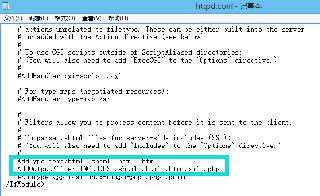Springboot在有參構(gòu)造方法類中使用@Value注解取值
我們?cè)赟pringboot中經(jīng)常使用@Value注解來(lái)獲取配置文件中的值,像下面這樣
@Componentclass A { @Value('${user.value}') private String configValue; public void test() { System.out.println(configValue); }}
但有時(shí)我們需要這個(gè)類擁有一個(gè)有參的構(gòu)造方法,比如
@Componentclass A { @Value('${user.value}') private String configValue; private String s; public A(String s) { this.s = s; } public void test() { System.out.println(s); System.out.println(configValue); }}
要使@Value生效,必須把Bean交給Spring進(jìn)行管理,而不能使用new去實(shí)例化對(duì)象,否則@Value取值為NULL。我們一般使用@Autowired都是默認(rèn)注入無(wú)參的構(gòu)造方法,要想注入有參的構(gòu)造方法,我們需要構(gòu)建Config類:
@Configurationpublic class AConfig { @Bean(name='abc') DataOpration abcA() { return new A('abc'); }}
然后創(chuàng)建SpringUtil類
@Componentpublic class SpringUtil implements ApplicationContextAware { private static ApplicationContext applicationContext; @Override public void setApplicationContext(ApplicationContext applicationContext) throws BeansException { if(SpringUtil.applicationContext == null) { SpringUtil.applicationContext = applicationContext; } } public static ApplicationContext getApplicationContext() { return applicationContext; } //通過(guò)name獲取 Bean. public static Object getBean(String name){ return getApplicationContext().getBean(name); }}
在調(diào)用時(shí),只需要獲取到對(duì)應(yīng)的Bean
A a = (A) SpringUtil.getBean('abc');a.test();
就可以同時(shí)獲取到配置文件中的值和傳入的參數(shù)。
以上就是本文的全部?jī)?nèi)容,希望對(duì)大家的學(xué)習(xí)有所幫助,也希望大家多多支持好吧啦網(wǎng)。
相關(guān)文章:
1. vue3+ts+elementPLus實(shí)現(xiàn)v-preview指令2. Xml簡(jiǎn)介_動(dòng)力節(jié)點(diǎn)Java學(xué)院整理3. 使用Hangfire+.NET 6實(shí)現(xiàn)定時(shí)任務(wù)管理(推薦)4. 如何在jsp界面中插入圖片5. phpstudy apache開啟ssi使用詳解6. jsp實(shí)現(xiàn)登錄驗(yàn)證的過(guò)濾器7. jsp文件下載功能實(shí)現(xiàn)代碼8. 詳解瀏覽器的緩存機(jī)制9. 爬取今日頭條Ajax請(qǐng)求10. xml中的空格之完全解說(shuō)

 網(wǎng)公網(wǎng)安備
網(wǎng)公網(wǎng)安備